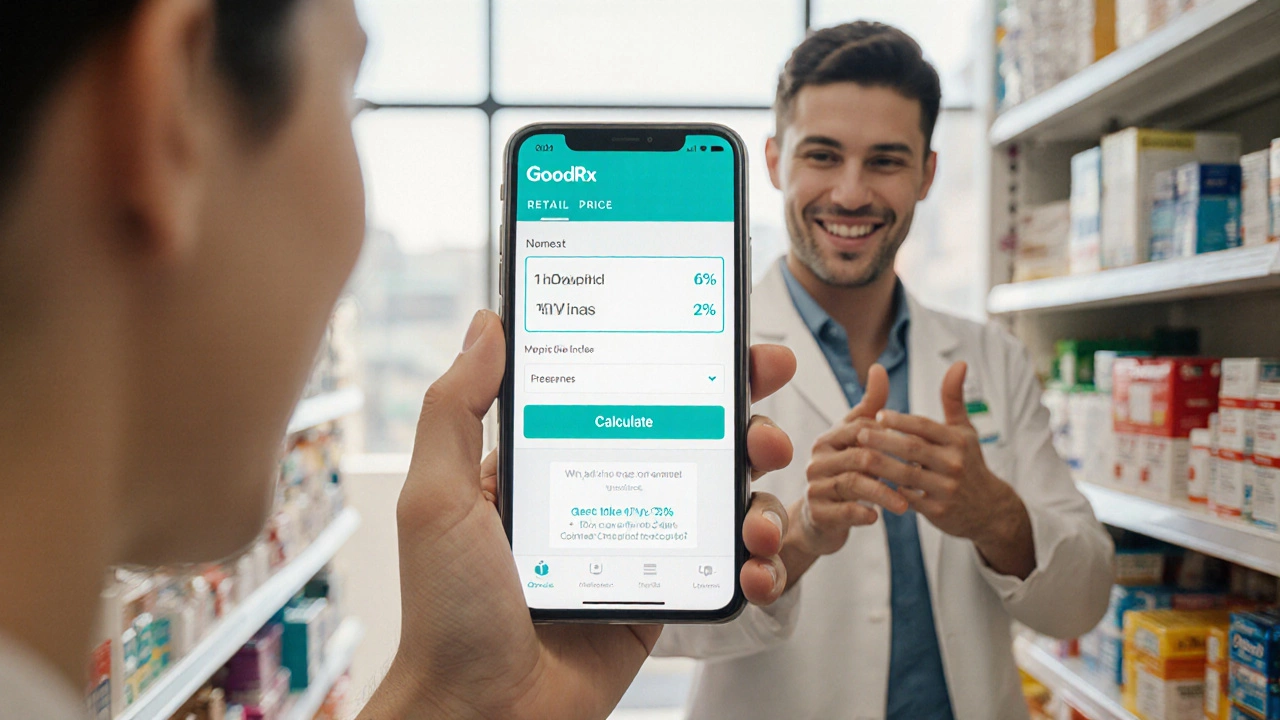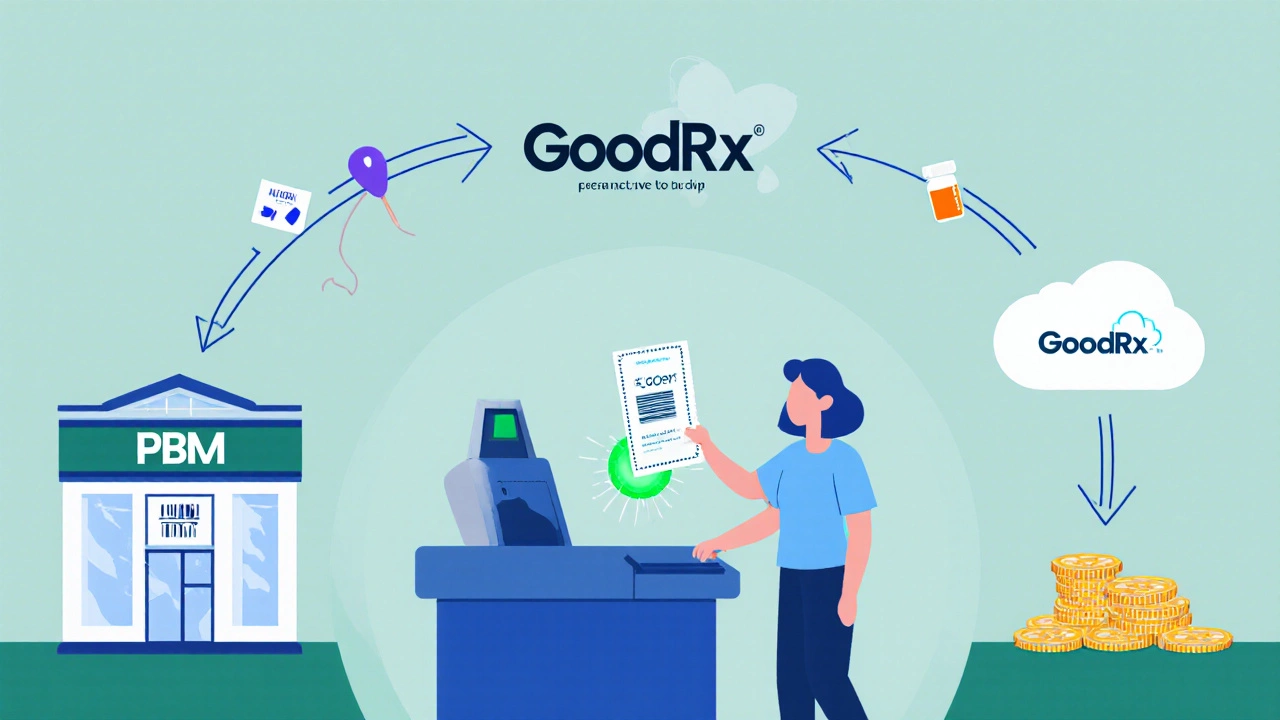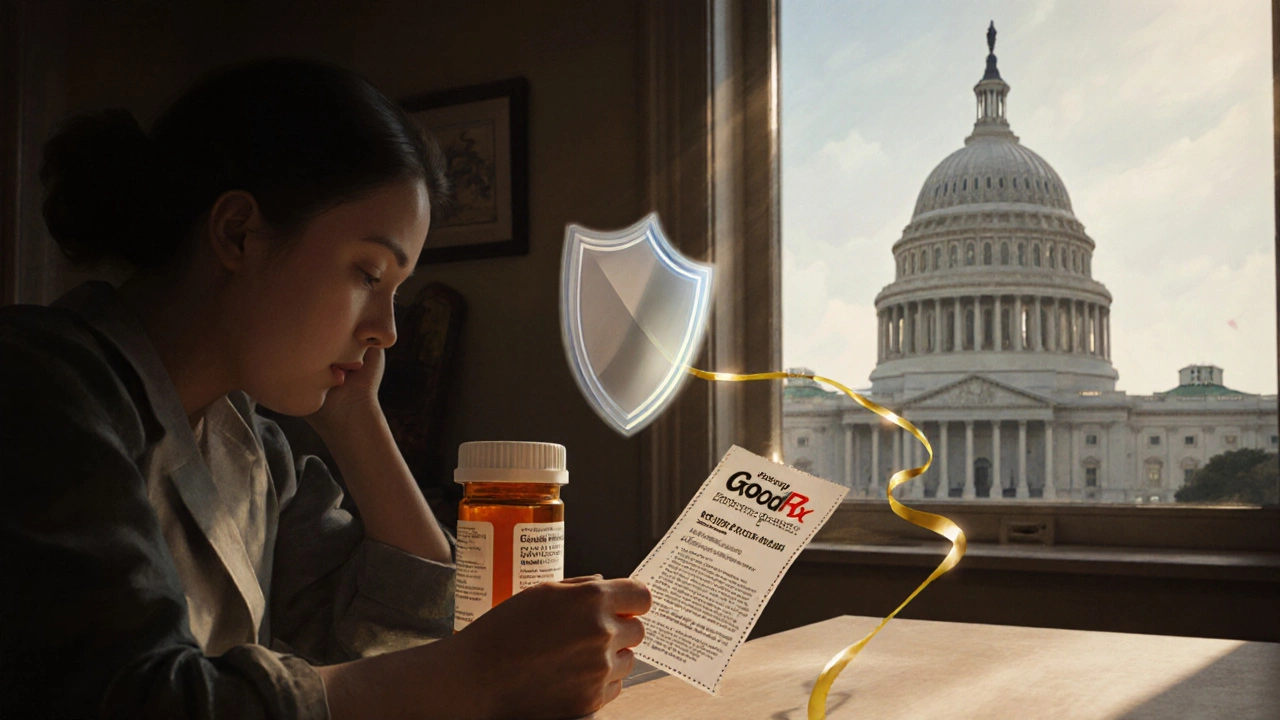 Oct, 3 2025
Oct, 3 2025
GoodRx Savings Calculator
Your Potential Savings
Retail Price:
$0.00
GoodRx Discount:
0%
Your Savings:
$0.00
Final Price:
$0.00
GoodRx offers discounts ranging from 10% to 80% depending on the medication and location.
GoodRx promises huge savings on prescription drugs, but is there a hidden catch?
- GoodRx is a free price‑comparison app that taps wholesale pharmacy prices.
- It negotiates discounts with Pharmacy Benefit Managers (PBMs) - not directly with drug makers.
- Users save 10‑80% off retail cost, but the service may collect personal data and steer traffic to partner pharmacies.
- Insurance plans can still be cheaper for chronic meds; GoodRx shines on brand‑name drugs without coverage.
- Understanding the flow of money helps decide when GoodRx is the right tool.
What is GoodRx?
When you first hear about GoodRx is a free mobile and web platform that aggregates prescription prices from multiple pharmacies across the United States. It was launched in 2011 and now serves over 30million monthly users.
The core idea is simple: show the lowest cash price for a prescription drug at nearby pharmacies, then let users claim the discount with a printed or digital coupon.
How does GoodRx get those discounts?
The savings don’t come from drug manufacturers. Instead, GoodRx partners with Pharmacy Benefit Managers (PBMs)-companies that negotiate drug prices on behalf of insurers and large employers.
PBMs maintain a “network” of contracted pharmacies that agree to sell certain drugs at a set wholesale rate. GoodRx purchases a small volume of those rates, then passes them on as a coupon. The process looks like this:
- GoodRx signs a contract with a PBM (e.g., CVS Caremark, Express Scripts).
- The PBM shares its discounted list price for a specific prescription drug.
- GoodRx formats the list price into a printable coupon.
- The user presents the coupon at a participating pharmacy. The pharmacy charges the discounted cash price and reports the transaction back to the PBM.
Because the transaction bypasses insurance, the user pays cash at the point of sale, avoiding co‑pays or deductible hurdles.
Where does the money go?
GoodRx keeps a slice of the discount as revenue. Rough estimates from industry analysts suggest the platform retains about 5‑10% of each coupon’s value. In exchange, the PBM gains increased volume at its contracted pharmacies, which can outweigh the discount they grant.
Additionally, GoodRx collects user‑level data-ZIP code, medication name, and sometimes insurance information-to refine its pricing algorithms and sell aggregated insights back to PBMs and pharma firms. This data sharing is covered in the app’s privacy policy, but many users aren’t aware of it.
Pros: When GoodRx truly shines
- Immediate cash savings for brand‑name drugs without needing insurance.
- Works for people with high‑deductible plans or those who are uninsured.
- No enrollment or credit‑card requirement to view prices.
- Provides price transparency-users can see a side‑by‑side comparison of at least three local pharmacies.

Cons and hidden catches
- Data sharing: GoodRx may sell anonymized prescription data to third parties.
- Not all pharmacies honor the coupons; chain stores usually do, while independent shops may decline.
- For chronic conditions covered by robust health insurance, the insurance route often remains cheaper.
- Some states (e.g., New York) have introduced legislation limiting discount‑app rebates, which could affect future availability.
Comparison: GoodRx vs. Other Savings Options
| Option | Typical Discount | Eligibility | Data Collected | Availability (US) |
|---|---|---|---|---|
| GoodRx | 10‑80% | Anyone (no insurance needed) | ZIP, medication name, optional email | All 50 states (varies by pharmacy) |
| Health Insurance | 5‑70% (varies by tier) | Policy holder | Full medical history, SSN | Nationwide (network limits) |
| Manufacturer Coupon | 15‑100% (often for brand‑name only) | Usually requires a valid prescription and sometimes insurance info | Prescription details, sometimes demographic data | Limited to specific drugs |
| Wholesale Club (e.g., Costco) | 5‑30% | Membership required | Minimal (purchase data only) | Select states |
When should you choose GoodRx?
If you pay cash for a brand‑name medication that your insurance labels as “non‑formulary,” GoodRx often beats the out‑of‑pocket cost. It’s also a solid backup when your insurance is still processing a claim.
However, for chronic drugs that are fully covered under a low‑deductible plan, sticking with your health insurance usually yields lower totals. Compare the total annual cost-insurance premiums, co‑pays, and deductibles-against what you’d spend using GoodRx coupons.
Regulatory landscape and future outlook
GoodRx operates in a gray area between pharmacy pricing transparency and rebate negotiations. The Food and Drug Administration (FDA) oversees drug safety but not pricing, while the Federal Trade Commission (FTC) monitors deceptive marketing.
Recent proposals in Congress aim to increase reporting requirements for PBM rebates, which could shrink the pool of discounts GoodRx can offer. Keep an eye on state-level legislation-New York’s “Pharmacy Transparency Act” already pushed some discount apps to adjust their coupon structures.
Bottom line checklist
- Check GoodRx price first for any brand‑name drug not covered by your plan.
- Verify that your local pharmacy accepts the coupon (look for the GoodRx logo).
- Compare total annual spend: insurance + co‑pay vs. cash + GoodRx discount.
- Read the privacy policy-know what prescription data may be shared.
- Stay updated on state legislation that could affect coupon availability.

Frequently Asked Questions
Is GoodRx legal?
Yes. GoodRx operates as a price‑comparison service and does not prescribe medication. It follows federal pharmacy regulations, though some states are reviewing rebate‑sharing practices.
Can I use GoodRx with my insurance?
You can, but you’ll be paying cash at the pharmacy, so the insurance benefits won’t apply. Often, the cash price with a GoodRx coupon is still cheaper than an uninsured co‑pay, but compare both options.
Do pharmacies charge extra for using a GoodRx coupon?
Most major chains honor the coupon at the listed discounted price. Some independent pharmacies may add a small processing fee, so it’s wise to call ahead.
What personal information does GoodRx collect?
GoodRx logs your ZIP code, medication name, pharmacy choice, and optionally email or phone for coupon delivery. The data is aggregated and sold to PBMs and pharma marketers per the privacy policy.
Will GoodRx work for Medicare PartD beneficiaries?
Yes, Medicare beneficiaries can use GoodRx, but it may be less cost‑effective than using the plan’s formulary tier pricing unless the drug is not covered or the plan’s co‑pay is high.
